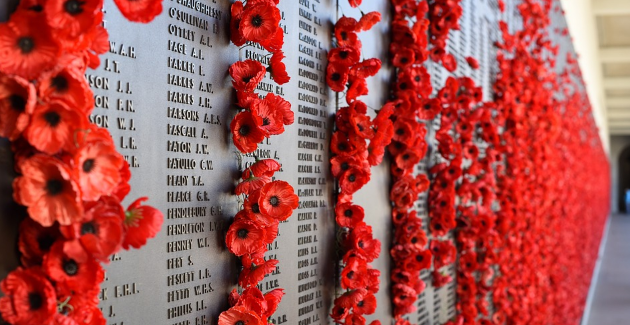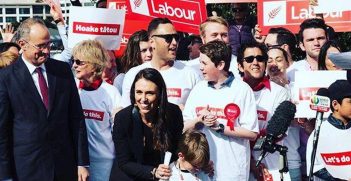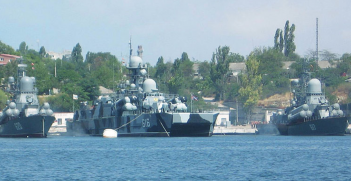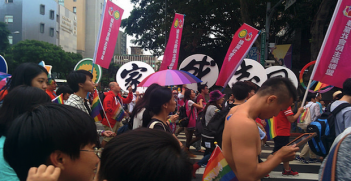Reflecting on the Consequences of War

The support offered to Australia’s veterans and their families rarely matches the grand rhetoric about the Anzacs. What if the country also reflected on the consequences of war, not only for Australia’s servicemen and women, but also for the countries in which they fight?
Late April is depressing. Summer in Australia has been and gone; the brief morning respite when clocks went back an hour has been overtaken by dark, cold dawns; the pinoak leaves have briefly flamed and only drab brown shreds remain. For the faithful, Easter brings sad, solemn ceremonies. Then the thud of distant drums begins. At first, small human-interest war stories start appearing in our media, then bigger ones, until the full-blown Anzac features arrive. There are spine-chilling dawn bugles and marches, the words of remembrance are repeated, hymns are sung and wreaths laid. So we mark this secular religious event, Australian warfare’s day of the year; or its half day, after which the shops and pubs and clubs re-open and the celebrations begin in earnest.
Antipodeans that we are, if our rituals were in tune with Australia’s seasons we would observe All Souls Day, or Halloween, or O-bon in misty, moody April, when the spirits of the dead in these and many other traditions return to be comforted, instead of in the Australian spring. Centuries ago, Easter was grafted over prehistoric northern hemisphere spring festivals, when celebrating new life with decorated eggs made some symbolic sense. In Australia it has no relevance to the season at all. Nor do Easter rabbits, which for the rest of the year we try to exterminate. Christmas holly, fir trees, candles and snow crystals in the middle of our summer are equally absurd. Commercialism has coated Easter in chocolate and made a consumer carnival of Christmas. Even Mardi Gras, our counterpart of carnivale, the ‘fat Tuesday’ binge before Lent, is held late in the Australian summer instead of at the end of winter as in Europe, when it inaugurates a period of repentance culminating in Easter and the spring revival.
At least Sydney has independently reshaped Mardi Gras to suit Australians. Marking Anzac Day on 25 April has historical validity too, and it is identifiably ours: a time to grieve. Commemoration of the Gallipoli landing began modestly in 1915, with small gatherings around memorials in country towns and shortish marches in the cities. These grew and multiplied over the years, and the Australian War Memorial, opened on Remembrance Day 1941, gradually became the national centre for annual commemorations of successive wars. It was the historian Geoffrey Serle who in 1967 identified the political and commercial aspects of this thriving industry as ‘Anzackery’.
In the 1980s the post-Vietnam war Fraser government took to distributing Australian flags and artificial Flanders poppies, creating a national anthem and promoting the Anzac legend in earnest. The more war experiences were commemorated, the more members the RSL could recruit; the more affordable travel became, the more Australians visited Gallipoli, France and Belgium and, later, Kokoda, Kapyong and Phuoc Tuy. Now Australia has constructed dedicated sites for them to visit at Anzac cove, Villers-Bretonneux and Nui Dat.
Australia has dedicated $600 million to official commemorations of World War I, far more than the governments of countries where it was fought. Is this because Europeans have endured war for centuries, whereas for the Australian Anzacs, the war was a new experience, an adventure? Or have Australian governments been cynically cultivating the next generation of willing recruits? If so, it’s strange they have been so short-sightedly parsimonious with payments to veterans and their families suffering the effects of Agent Orange and post-traumatic stress disorder. But Australian governments typically think of the current budget, the present war and the next election, not of the next generation. By then, the politicians who ordered the war will have retired, and most of the veterans affected by it will be dead.
War has its downsides, to put it mildly. But the political potential of patriotism was not lost on Australian leaders, whose rhetoric rose to greater heights every Anzac Day. Grand claims were made about Gallipoli being the birthplace of the Australian nation. The undoubted bravery of our troops was progressively inflated to such heroic proportions that anyone who demurred, as some writers did, needed courage themselves. Controversy greeted Alan Seymour’s 1960 play, The One Day of the Year, in which young Hughie smokes marijuana on Anzac Day and disparages the glorification of war, while his war veteran father reminisces about the “Poms and wogs and bloody Ey-ties” who—even then—were “invading” Australia. Seymour then wrote The Gaiety of Nations (1965), an anti-Vietnam war play which was produced in London but never in Australia.
David Williamson’s Jugglers Three (1973) included less-than-heroic Australians in Vietnam, whose discreditable acts were cut from the play by the Melbourne Theatre Company. Critics described Robin Gerster’s book, Big-Noting (1982), a discussion of the heroic theme in Australian war writing, as brave, controversial and heretical. Prime Ministers Howard and Abbott saw a lavishly funded military as a growing constituency, and both refused to countenance any public questioning of the ADF or what it was doing. So David Stephens and I can expect outraged reactions to The Honest History Book, which we have edited and published in time for Anzac Day 2017, in which a score of writers challenge the way war dominates conventional Australian historical and media narratives.
A tsunami of World War I commemorations seemed likely to engulf us from 2014 to 2018, but it has largely ebbed away. Whether this reflects over-Anzackery or distaste for the current war, the longest in our history, is not clear. The veterans affairs minister is warning of a high terrorism threat level in Istanbul and Ankara, so war tourists may decline in numbers or go elsewhere. There may even be change left over from the largesse devoted to Anzac commemorations. With it, the Australian Embassy in Paris might be able to display materials in its foyer other than guides in English to the battlefields, which is all that was on offer when I last visited. Might expenditure for peace-promoting purposes be too much to expect?
These could usefully include a proper cost-benefit evaluation of past and present wars, identifying the lessons to be learned from them and understanding what they did to Australia. As Henry Reynolds, another eminent historian, has shown in Unnecessary Wars (2016), Australians don’t ask why or with what result we went to war, only how we fought. Repeating this practice is no way to avoid future disasters, let alone further waste of lives and money. We could also find out how those wars affected those whom Australia fought against.
At this year’s Anzac Day events it would be salutary to hear speeches that remind Australians that we have not won a war since 1945. It would be a change to be told how many bombing raids Australia has flown in Iraq and Syria, how many civilian deaths we have caused and how this has increased the numbers of refugees. We could invite our neighbours in Asian countries to discuss why none of them felt so threatened by Saddam Hussein that they had to invade Iraq and thus do not bear responsibility for the consequences as Australia does. Instead of prolonging the current war, we could usefully investigate how to stop fighting and help with reconstruction. And instead of suppressing the facts and learning nothing, our government should hold an inquiry into how we entered the wars in Afghanistan, Iraq and Syria and, as other Western countries have done, publish the results.
Dr Alison Broinowski FAIIA is a former Australian diplomat and the author and editor of 14 books on Australia’s interface with Asia and the wider world. She is vice president of the Honest History group and vice president of Australians for War Powers Reform.
This article is published under a Creative Commons Licence and may be republished with attribution.





